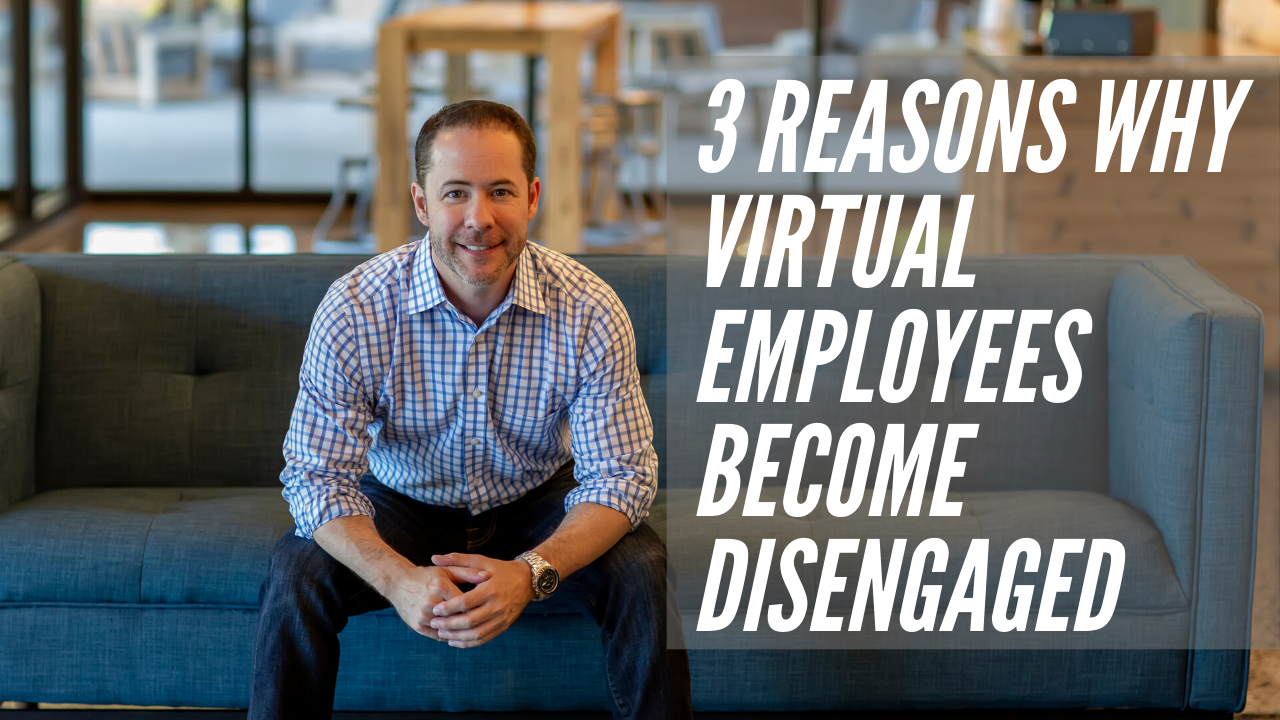The ongoing Covid-19 crisis has altered our way of life in many ways. Nowhere is this more true than in how we accomplish our work. For better or worse, virtual work is how we must get business done. And while many believe remote work has a great chance to increase employee engagement, there are 3 key reasons why virtual employees are in danger of becoming disengaged.
Before the crisis, roughly 35% of employees were fully engaged in their work while 65% of employees are either partially engaged or fully disengaged. In the new reality of virtual work across every industry, employee engagement will become one of the key differentiators between companies as it will greatly impact everything from product and service quality to productivity, operational costs, and innovation.
While some may predict that virtual work will increase engagement, the evidence tells us that the distance between team members and a change in work processes will result in a higher percentage of disengagement among employees. A decline in engagement will lead to lower work satisfaction, quality, and performance for three reasons.
Disconnection. A dispersed team is more likely to be disconnected emotionally. When we are not with people, we miss the unplanned talks about topics that involve our personal lives. These conversations build a sense of similarity and likeability. Dispersed employees also miss some of the simple and often overlooked behaviors of colleagues like smiles, facial expressions, body language, and impromptu interactions that quietly build trust and camaraderie.
In virtual work environments, communication is only when necessary and therefore less often than it occurs when people are in the same location. Likewise, disconnection can occur between the leader and employee as interaction typically happens less often and for a shorter amount of time.
Distraction. The majority of workers are now working from home where distraction is the greatest challenge. Multi-tasking during a conference call has been reported as one of the biggest manifestations of distraction for virtual workers. Distractions are now more complex because workers have to balance their jobs with the demands of being at home with kids who can no longer attend school or daycare. Many people have additional responsibilities further increasing distraction and the need for flexibility.
Deactivation. Our brains are currently focused on managing two great threats from Covid-19. First, the threat to our health and the health of our family members. This threat potentially leads to hospitalization or death. A second threat is of losing our jobs and life-savings due to an economic meltdown. Brain studies show that when we attend to threats, our brain activates neurochemicals like adrenaline and cortisol that exacerbate negative thinking cycles and catapult us into a state of fight or flight. When this happens deactivation occurs in the areas of our brain that are responsible for creativity, emotional control, critical thinking, and hinder positivity, motivation, and engagement.
It’s important that leaders understand that employees are battling these three D’s in their virtual work environments (disconnection, distraction, and deactivation) and take action to mitigate them as much as possible. Leaders that are serious about combating the 3 D’s can take intentional action by employing the 3 C’s. Learn about the three C’s by reading my article on How to Avoid Virtual Employee Disengagement.

